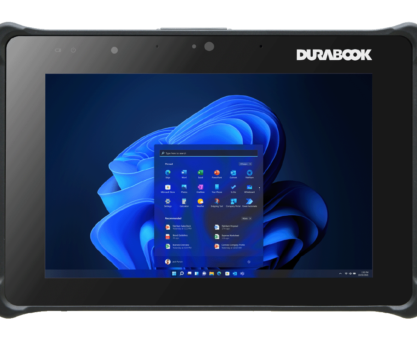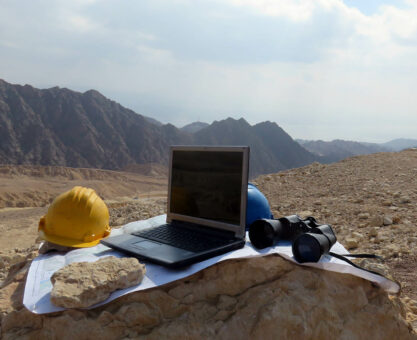19/09/2016 23:28
As we continue our series evaluating the latest rugged devices to come onto the market we look at Janam’s new entry into the rugged tablet market, the XT2. Traditionally a rugged handheld computer manufacturer, how has their expertise translated into what is arguably their most consumer-looking fully rugged device yet as they step into the increasingly popular form factor of smaller rugged tablets…
What the manufacturers say:
Productivity and resource utilisation are critical to the success of any mobile workforce. Janam’s XT2 rugged touch computer enables mobile employees to work smarter and more efficiently – ultimately improving operating results and increasing customer satisfaction.
Weighing only 10 ounces, the XT2 is smaller, lighter and faster than other rugged mobile computers in its class and equipped with a brilliant 5-inch colour display with Corning® Gorilla® Glass 3. With an impressive smartphone like design, the Android™-powered XT2 is equipped with the latest technological advancements, including 4G LTE wireless connectivity for lightning fast access to voice and data, dual-band 802.11a/b/g/n Wi-Fi and high sensitivity GPS.
The XT2 is a purpose-built device designed to foster more collaboration across mobile workforces. High-performance 1D and 2D barcode scanning, as well as RFID and NFC reading capabilities, ensures organisations can address a full spectrum of data capture needs with one device. Integrated 8.0MP/2.0MP front and rear-facing colour auto-focus cameras enable customers to capture high-resolution photos, signatures and more.
The XT2 is sealed to IP67 standards against dust and immersion in up to 3 feet of water. It can withstand multiple 5’/1.5m drops to concrete per MIL-STD 810G across a wide temperature range.
First impressions:
The last time Field Service News got our HandsOn a device from Janam (The XM5) our one criticism was that whilst the device ticked all of the boxes in terms of relative processing power, ruggedness and functionality, it still had a slight air of yesterday’s device about it.
In fairness, as we pointed out at the time, this was less about the XM5’s profile and more about the form factor itself. It was a great example of a device within the traditional handheld computer form factor, but in an age of tablets and smartphones, the traditional looking handheld, especially fully rugged variants, just look that little bit dated.
[quote float=”left”]We have seen a growing trend in recent years for rugged manufacturers to start emulating the sleeker lines of consumer devices where possible as long as they aren’t sacrificing ruggedity.[/quote]Of course, we are firm believers in the ‘fit-for-purpose’ argument and at the end of the day performance is far more critical to a field engineer than simple good looks.
That said however, there is also an argument that a device that has more of a ‘consumer feel’ about it is potentially more likely to engender faster adoption rates. Indeed, we have seen a growing trend in recent years for rugged manufacturers to start emulating the sleeker lines of consumer devices where possible as long as they aren’t sacrificing ruggedity.
Gen2Wav and Honeywell have both recently released products that are fine examples of fully rugged devices that do just this and Panasonic’s soon to be launched FZ-F1 will also be in a form factor that is as close to a smartphone as it is a tablet and such devices make a good comparison for the XT2.
The device is lightweight and sleek. Despite being referred to as a rugged touch computer, it has more of a feel of a large smart phone and when we look at it alongside other rugged smartphones, it is a fine example of what can be achieved in terms of a slim and sexy form factor in a rugged device.
Processing power:
The XT2 has a reasonable Quad-core Qualcomm MSM8916 CPU @1.2GHz which whilst not being the fastest on the block (Panasonic’s FZ-N1 runs a Qualcomm® MSM8974AB 2.3GHz Quad Core for example) it is certainly up there with the majority of similar devices within the field.
The XT2 operates on up-to 2GB RAM with 16GB ROM which is somewhere in the middle of the pack and definitely suitable for a number of field service applications – the memory is also expandable via a user accessible Micro SD slot with SD and SDHC support
Operating system:
The XT2 is currently running Android 5 (Lollipop) which is a common standard for industry focussed devices.
Lollipop is now tried and trusted and enterprise secure. There is unlikely to be an issue with any applications devised for it and equally introducing it into the IT mix shouldn’t be too much of a headache in terms of both implementation and a security protocols as the OS has been around for sometime now.
Whilst Android 7.0 is now appearing in the latest consumer handsets and Android 6.0 is now fairly prevalent in the consumer world, in terms of the UX , whilst there is some difference in terms of functionality, visually the difference between Lollipop(5) to Marshmallow (6) is very small.
Therefore, the benefits of Lollipop in terms of stability make sense whilst the fear of the OS taking the shine off the consumerised feel of the XT2 are also minimal.
The Ins & Outs:
Whilst the XT2 doesn’t have the world’s greatest amount of Input/Output options (which is to be expected in a device with such a light footprint) it does include all of the key essentials.
[quote float=”right”]Where the XT2 has a distinct advantage over many rugged smartphones/mini tablets that aren’t designed with industry in mind is its inclusion of a dedicated bar-code scanning engine[/quote]There is a 3.5mm headphone jack, which can be vital when it comes to making audio/video calls whilst in the field, and a USB 2.0 port brings the option for both commonplace universal charging as well as data syncing.
Where the XT2 has a distinct advantage over many rugged smartphones/mini tablets that aren’t designed with industry in mind is its inclusion of a dedicated bar-code scanning engine (Zebra SE4710 1D/2D imager) as well as the ability to read all NFC types and RFID tags in the 13.56 MHz range.
Coupled with four programmable power buttons, which are likely best put to use to trigger the barcode scanner and this could be highly advantageous for field engineers whose role includes swapping out a large number of parts.
Connectivity:
In terms of connectivity the XT2 supports Dual-band 802.11a/b/g/n and is Cisco certified which covers most of the available bases and should allow for good Wi-fi connectivity speeds regardless of the signal it is using. In addition to this the XT2’s Wi-fi security protocols are also robust. The device also supports EDGE/GPRS/GSM, WCDMA and LTE for 4G mobile internet.
The XT2 also features Bluetooth 4.0 so can be paired with additional tools in the field including potentially Android Wear based smart watches or glasses as well as a keyboard for data input.
Additionally, the device offers Qualcomm® IZat™: Gen 8 support for three bands concurrently (GPS, BeiDou and GLONASS or Galileo) which can be invaluable in the field both in terms of updating asset information as well as geo-location functionality, to a precise degree.
Ruggedity:
It is when we look at the rugged specs of the XT2 that the device really stands out as a great example of what can be achieved in such a sleek form factor.
[quote float=”left”]The fact that it is dropped directly onto concrete, instead of two inches of plywood as required for MIL-STD 810G, also adds further to its rugged credentials.[/quote]The Janam XM5 handheld is a solid, robust device which, with it’s IP rating of 65 is totally impervious to dust and can cope with all but the worst soaking, however, the XT2 pushed the rugged specs even further with an IP rating of 67 meaning not only is it impervious to dust but it is also capable of being fully submersed in water up to 3 feet deep.
In terms of drop resistance the device is tested against the standard 1.5 meter MIL-STD 810G drop tests onto concrete from all angles across a wide range of temperature ratings. The fact that it is dropped directly onto concrete, instead of two inches of plywood as required for MIL-STD 810G, also adds further to its rugged credentials.
The XT2 also has an operating temperature range of -20º to 60º C so should be functional in even the most testing environments.
Battery Life:
In terms of battery life the XT2 comes with a 3000mAh battery as standard but with the option to upgrade for a 4000mAh version also available.
Whilst in theory this should be enough to see out most engineers working days and in our own testing the battery lasted a full day with moderate to heavy usage, there is also an extended battery kit available.
Conclusion:
First up the XT2 is a great looking device and it feels good in hand. It’s both lightweight and comfortable and could easily pass for a smartphone at first glance. An important factor in terms of user adoption given the proliferation of the consumerisation of mobile computing today.
[quote float=”right”]The XT2 is especially suited for those field technicians working in an environment where a fully rugged device becomes essential.[/quote] In terms of ruggedity, the XT2’s IP rating of 67 is highly impressive and this is a device that would be suited to even the most extreme of field service environments.
Although the processing power isn’t quite at the very top end of its category, there is still plenty of power to run the vast majority of apps a field service technician would likely need – it’s certainly no slouch and responded quickly in our own tests.
All in all the XT2 is a fantastic option for any field service technician, it is a lightweight device and the programmable buttons could greatly improve work-flow in some areas. However, the XT2 is especially suited for those field technicians working in an environment where a fully rugged device becomes essential.
[hr]















